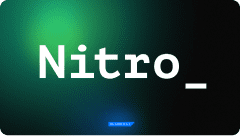SEO and content marketing, often perceived as distinct strategies, are actually deeply interconnected facets of digital marketing. While SEO harnesses the power of keywords and algorithms to boost visibility, content marketing engages and retains audiences with valuable, relevant storytelling. Together, they form a robust framework to amplify a brand’s online presence and authority.
Companies understand how content marketing helps SEO and vice versa, and are successfully integrating these two approaches into their strategies. This symbiosis propels websites to the top of search engine results and cultivates loyal customer bases. Our exploration reveals how this integrated approach is revolutionizing digital marketing campaigns and setting new standards for success.
Read also our articles related to this topic:
SEO Plan. How Long Does It Take To Promote A Website In Search Results?
Search Queries Analysis and Adjusting Promotion Strategy
What is сontent marketing?
Content marketing is the process of developing and distributing content that resonates with a chosen buyer persona to drive profitable actions from customers. A buyer persona is a detailed profile of an ideal customer from market research and real customer data, including demographic and behavioral insights. This strategy aims to connect with this persona through content that meets their unique needs and interests.
Unlike direct promotions, content marketing uses storytelling to address customer problems, offer solutions, and engage with narratives that align with the audience's personal or professional goals. It employs a diverse range of content formats like blog posts, articles, videos, infographics, and podcasts, all aimed at delivering value first, thus fostering brand loyalty and recognition. An essential part of this approach involves finding skilled copywriters who can craft content that resonates deeply with the buyer persona.
The strength of content marketing lies in its ability to establish trust by providing insights and practical advice to the buyer persona, without resorting to overt sales tactics. This approach positions businesses as credible and knowledgeable within their industry, focusing on building a community around the brand and promoting long-term advocacy. As a result, it leads to sustained engagement and a loyal customer base that actively supports the brand.
What is SEO?
Search Engine Optimization, or SEO, is the technical craft and analytical art of optimizing digital content and websites to improve their visibility and ranking on search engine results pages (SERPs). SEO encompasses a multifaceted set of practices designed to enhance the quality and volume of organic (non-paid) traffic to a website.
At the intersection of technology and marketing, SEO requires a deep understanding of the algorithms that search engines like Google use to rank web pages. It involves optimizing various elements of a website, such as its structure, content relevance, keyword density, meta tags, and inbound and outbound link quality. Additionally, SEO professionals must stay abreast of the ever-evolving search engine guidelines and the impact of artificial intelligence on search patterns.
The objective of SEO is not simply to increase website traffic, but to attract the right kind of traffic — potential customers actively seeking solutions that a company provides. High-quality SEO work goes beyond the technicalities; it ensures that the content a user finds is authoritative, engaging, and precisely what they're looking for. This synergy between satisfying user intent and adhering to search engine best practices is what propels a website to the top of SERPs, where visibility is greatest.
Benefits of combining SEO and content marketing
The synergistic relationship between content marketing and SEO is redefining the blueprint for digital success. Here’s how integrating these two strategies can benefit your business:
Enhanced visibility and organic reach
SEO content marketing increases your content's visibility in search engine results pages (SERPs). By targeting the right keywords and optimizing your content for search engines, you amplify its reach, ensuring it's found by the right audience at the right time. This leads to organic growth in website traffic without the constant need for paid advertising.
Synergy between quality and relevance
SEO demands relevance, and content marketing requires quality. When these two are combined, you get high-quality content that satisfies search queries, addresses user intent, and provides value. This not only pleases search engines but also delights users, creating a powerful user experience that can lead to higher conversion rates.
Cost-effectiveness
SEO content marketing is one of the most cost-effective marketing strategies. Unlike paid advertising, which requires ongoing investment to drive traffic, evergreen content that ranks well can attract visitors months or even years after publication, providing a lasting return on investment.
Better user engagement
Content crafted with both SEO and user experience in mind tends to engage readers more effectively. SEO tools and analytics can provide insights into what your audience is seeking, allowing you to tailor your content to meet those needs and preferences, resulting in higher engagement levels.
Long-term audience building
SEO-enhanced content marketing is not just about attracting visitors. It’s about converting those visitors into a loyal audience. By consistently delivering content that resonates with readers and ranks well, you foster a long-term relationship with your audience that can translate into brand loyalty and advocacy.
Moreover, SEO content marketing enhances brand authority and credibility. By regularly appearing at the top of SERPs, your brand is perceived as more trustworthy by potential customers. This elevated status in the digital landscape can lead to increased business opportunities and partnerships, further driving growth and profitability.
How to start combining SEO and content marketing

The journey to a seamless integration of SEO and content marketing is continuous. Here's a detailed roadmap to guide the process:
1. Establish converging objectives
Begin by establishing specific, aligned objectives for your SEO content marketing efforts. You will need to decide on shared KPIs that reflect both content engagement and SEO success. These might include raising certain keyword rankings, increasing the average time users spend on your site, improving lead generation volumes, and enhancing customer acquisition figures. It’s essential to have a unified tracking system that monitors these KPIs to measure the progress of your combined efforts.
2. Conduct сomprehensive research
Dive into in-depth research that includes understanding your audience's preferences, behaviors, and the types of queries that lead them to your content. Utilize various tools for keyword discovery and competitive analysis. Additionally, scrutinize your customer journey to pinpoint exactly what information your customers need at each stage. This step is crucial for identifying not just keywords, but also topics and content types that will resonate with and meet the needs of your audience.
3. Develop an SEO content strategy
Create a content strategy that is a direct outcome of your intensive research. This should lay out a publication calendar that addresses the different informational needs of your audience throughout the buyer's journey. Make sure to plan for a mix of content types, including articles, videos, and podcasts, with each piece tailored for specific SEO targets based on your earlier research.
4. Ensure holistic content optimization
In your SEO content creation, go further than merely inserting keywords. Craft titles, headers, and meta descriptions with optimization in mind. The content itself should have a clear, organized structure with logically arranged headings to aid readability for users and search engines alike. The strategic use of internal linking should connect your content pieces and guide search engines in understanding their interrelations.
5. Expand reach through strategic promotion
Consider each piece of content's promotion potential. Will it be linked to from a high-traffic blog post? Can it be featured in a weekly newsletter? Is there potential for engagement on social platforms? Tailor your promotional efforts to match the content format and intended audience, enhancing visibility and driving traffic back to your site.
6. Leverage data-driven insights for continuous improvement
Implement a robust analytics framework to capture data from both content and SEO performance metrics. This should include traffic patterns, user behavior, conversion rates, and content engagement. By analyzing this data, you can identify trends, inform future content creation, and continuously refine SEO strategies to improve overall performance.
7. Adapt to industry and algorithm changes
Stay attuned to the pulse of digital marketing trends and search engine algorithm updates. The digital landscape is in constant evolution, and staying ahead means being prepared to pivot strategies and update practices. This might involve embracing new content formats, adopting emerging SEO techniques, or revisiting user engagement tactics.
The objective is to build a digital ecosystem where SEO and digital marketing do not merely coexist, but actively support and enhance each other. It's about creating a dynamic that drives traffic through the technical prowess of SEO and also captivates and retains this traffic with the compelling storytelling of content marketing. Such a holistic approach elevates a brand's digital footprint and ensures that it delivers a memorable and meaningful experience to its audience.
SEO content creation: crafting for both audience and algorithms

The symbiosis of content marketing and SEO is epitomized in the meticulous crafting of content that captures the interest of readers while also satisfying the technical demands of search algorithms. Creating this harmony between audience appeal and algorithm adherence is the foundation of a successful digital marketing strategy.
Writing compelling content that satisfies search queries
In the realm of digital content, user queries are a window into the audience’s soul. Understanding and answering these queries with compelling content is the first commandment of SEO content creation. But how can you ensure that content draws in readers and also addresses their specific needs?
It starts with intent research, diving deep into why users search for particular terms and what they hope to find. This goes beyond mere keywords: it is about understanding the user’s end goal. Once the intent is clear, the content should be tailored to provide the most comprehensive and engaging answer to those queries.
The content must be informative, accurate, and interesting enough to keep readers hooked, but it also has to be presented in a way that search engines can understand and appreciate. This is where SEO enters the storytelling arena, guiding content creators on how to structure their articles for optimal search visibility.
The importance of structure: headers, subheaders, and meta tags
Structuring content for SEO is akin to building a skeleton for your story — it supports and shapes the information presented. Effective use of headers and subheaders (H1s, H2s, H3s, and so on) not only helps readers navigate through the article, but also allows search engines to grasp the main points of your content.
-
H1: Start with a strong, relevant H1 tag that encapsulates the main topic.
-
H2s and H3s: Use these for subsections, ensuring they include related keywords and phrases.
-
Meta description: This is your content’s elevator pitch to both users and search engines. It should be concise, compelling, and rich with primary keywords.
Each element, from titles to meta tags, should include relevant keywords without sacrificing the natural flow of the text. Over-stuffing with keywords will turn readers off and can also lead to penalties from search engines.
Balancing timeless сontent with trending topics
A good SEO content strategy mixes lasting evergreen content with current hot topics. Evergreen content is key because it's always useful to readers and keeps bringing people to your site. This includes articles that answer basic questions, how-to instructions, or deep dives into important topics in your field that stay relevant for a long time.
Conversely, trending topics can generate a surge in traffic and show that your brand is in tune with current industry or general world events. This content may have a shorter life span, but can significantly increase visibility and bring in new audiences when leveraged correctly.
Here’s how you can balance the two:
-
Identify your cornerstone timeless content that consistently attracts visitors and ensure it's regularly updated to remain relevant.
-
Monitor industry news and trends to quickly produce content that capitalizes on current events or trending topics.
-
Create a content calendar that includes a mix of both, allowing for flexibility to inject trending topics as they arise.
By integrating SEO techniques with effective content creation, you can develop content that resonates with your audience and meets search engine criteria. This strategic approach involves a careful balance between engaging writing and smart keyword integration. When achieved skillfully, this combination improves visibility and fosters engagement to build a dedicated readership over time.
Measuring success: analytics and performance indicators

Once you've blended SEO with content marketing, the next crucial step is measuring success. To truly understand the impact, you need to track specific analytics and performance indicators.
Key performance indicators (KPIs)
The effectiveness of your SEO content strategy can be gauged through KPIs, which should be aligned with your business objectives. These typically include:
Each KPI offers insights into different aspects of your SEO content marketing strategy's performance, helping guide future tactics.
Analytics tools
The depth of understanding of these KPIs comes from using advanced analytics tools. Here’s how they can benefit your strategy:
-
Google analytics offers a comprehensive view of your site’s traffic, user behavior, and conversion metrics, allowing you to see which pieces of content are performing best and why.
-
Ahrefs is invaluable for backlink analysis, keyword tracking, and identifying content gaps. You can see where your content stands in the competitive landscape and find new opportunities for growth.
-
SEMrush provides a suite of tools that aid in keyword research, site audits, and performance tracking across various search engines, giving you a multi-dimensional view of your strategy's efficacy.
-
Search console helps monitor and optimize your website's visibility in search results. It provides insights into search traffic and site performance, and identifies issues affecting your search rankings.
Tracking the right KPIs with advanced analytics tools is foundational to understanding and enhancing the impact of your SEO content strategy. By establishing a data-driven culture, you can ensure that these two powerful marketing disciplines work together to achieve your broader digital marketing goals.
Navigating the challenges of combining SEO and content marketing
While content marketing and SEO complement each other, their fusion is not without its challenges. Here are some common hurdles and how to overcome them effectively.
Challenge #1: Balancing quality content with SEO optimization
Solution: Prioritize your audience’s needs by crafting valuable content that naturally incorporates keywords. Create pieces that answer questions, solve problems, or provide insights. Use SEO to guide you, ensuring keywords fit seamlessly into headings, subheadings, and paragraphs. Balance comes from writing for people first, search engines second.
Challenge #2: Creating content that serves both new and returning visitors
Solution: Segment your audience and tailor content to different stages of the user journey. Develop foundational evergreen content for new visitors, while providing advanced, in-depth materials for returning or experienced users. Regularly analyze user behavior to refine your content strategy, ensuring it caters effectively to both segments.
Challenge #3: Finding copywriters proficient in SEO-focused content
Solution: Engage with an agency specializing in SEO content writing. Such agencies have skilled writers who excel in producing content that is both engaging for the audience and optimized for search engines. This approach ensures access to quality SEO content that aligns with your marketing objectives.
Challenge #4: Ensuring consistent and frequent content publication
Solution: Develop a content calendar and stick to a publishing schedule. This helps in planning your resources, topics, and SEO tactics ahead of time. Use content management systems and automation tools to maintain a steady flow of content, even during resource crunch times.
Challenge #5: Integrating SEO into various forms of content
Solution: Understand that SEO is not just for blog posts or articles. Optimize all forms of content, including videos, infographics, and podcasts by using descriptive titles, tags, and metadata. For visual content, focus on image alt text and sitemaps to ensure they are indexed and visible to search engines.
Challenge #6: Measuring the ROI of content marketing SEO efforts
Solution: Define clear KPIs and utilize analytics tools to track your performance. Look beyond surface-level metrics like page views and delve into engagement, conversion rates, and revenue generated. Set up proper attribution models to understand the customer journey and determine how your content contributes to sales or other business goals.
By anticipating these challenges and implementing these solutions, you can create a cohesive strategy that harnesses the strengths of both content marketing and SEO.
Conclusion
Blending content marketing with SEO can be challenging, requiring mastery in multiple fields. You must understand search engine mechanics and SEO tools, while also creating content that truly speaks to your audience. Despite its challenges, this combination is crucial for business success, leading to better search rankings, more website visitors, new customers, and in the end, increased profits.
If you'd prefer not to delve into the intricacies of SEO content marketing yourself, consider partnering with an expert agency. At Alconost, we have experts who integrate cutting-edge search optimization and content marketing techniques. We provide comprehensive SEO content marketing services. If you want your content to continuously attract new customers, reach out to our SEO content marketing agency, and we can discuss your project in detail.
Alconost is an internet marketing agency that offers search engine optimization for multilingual websites as well as PPC management, SMM and Content marketing. We conduct full SEO audits and website optimization, improve website usability, develop an international promotion strategy and analyze statistics and many others to increase your profits and improve your positions in search engines.
Services you can be interested in:







